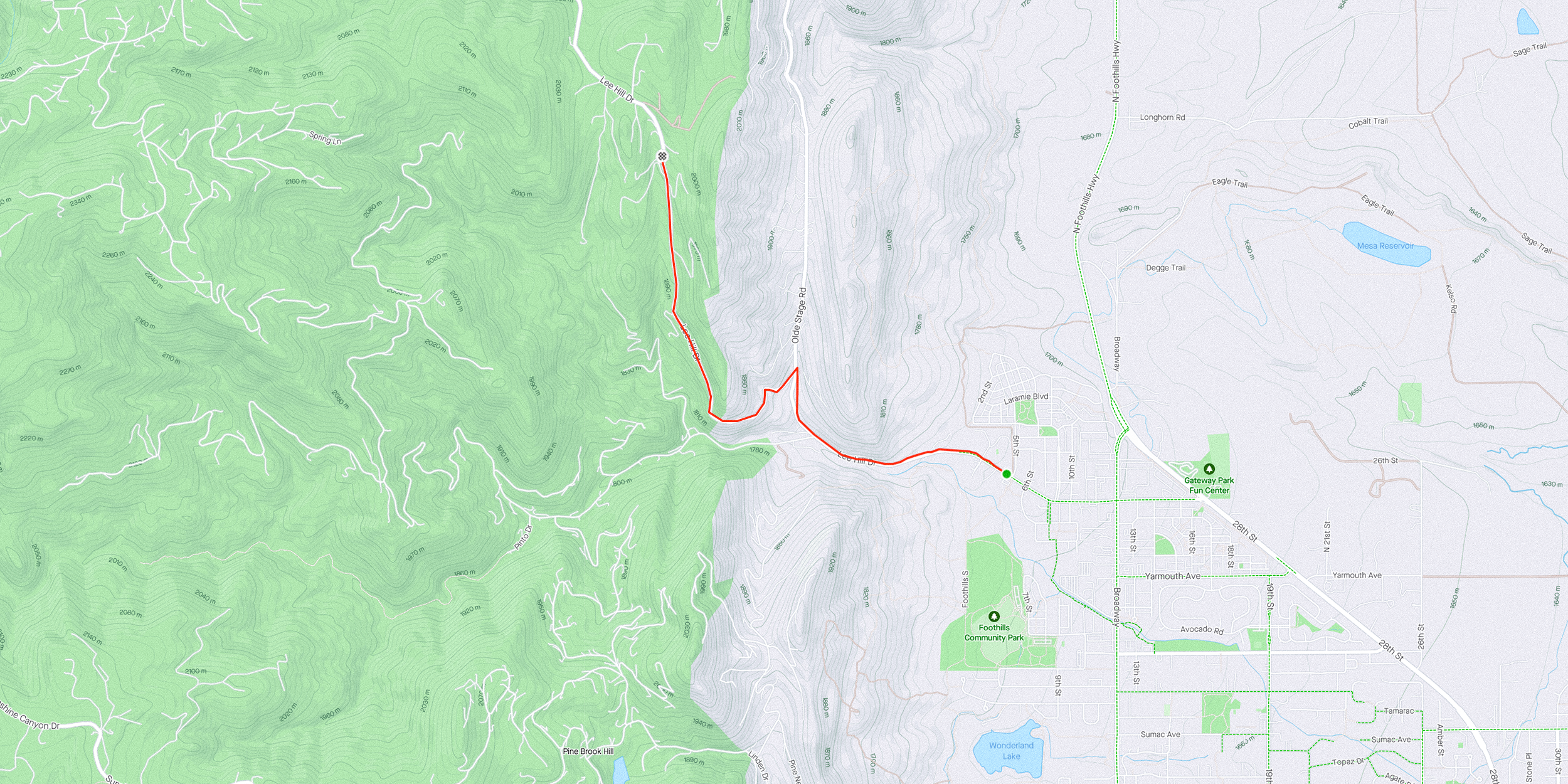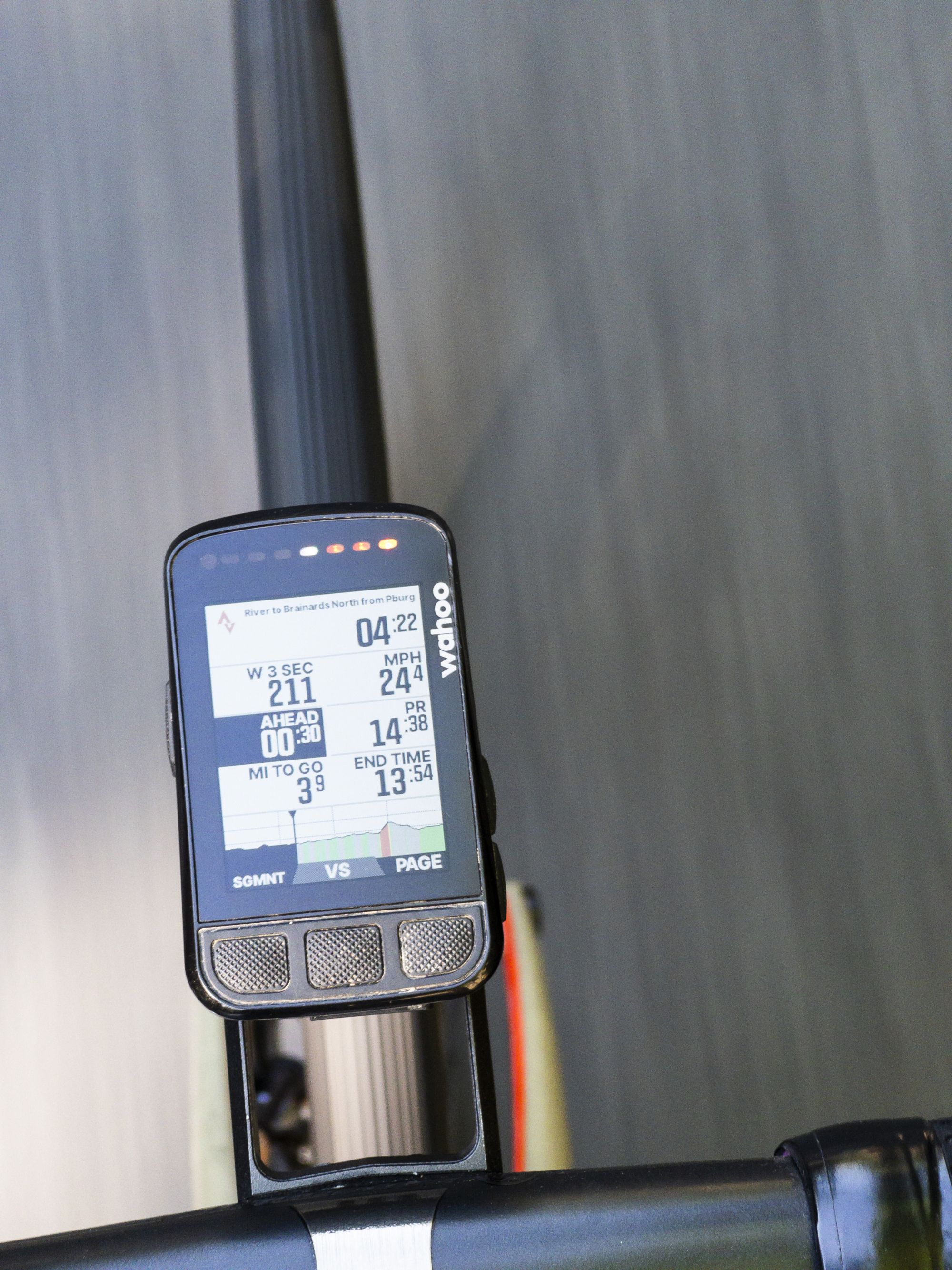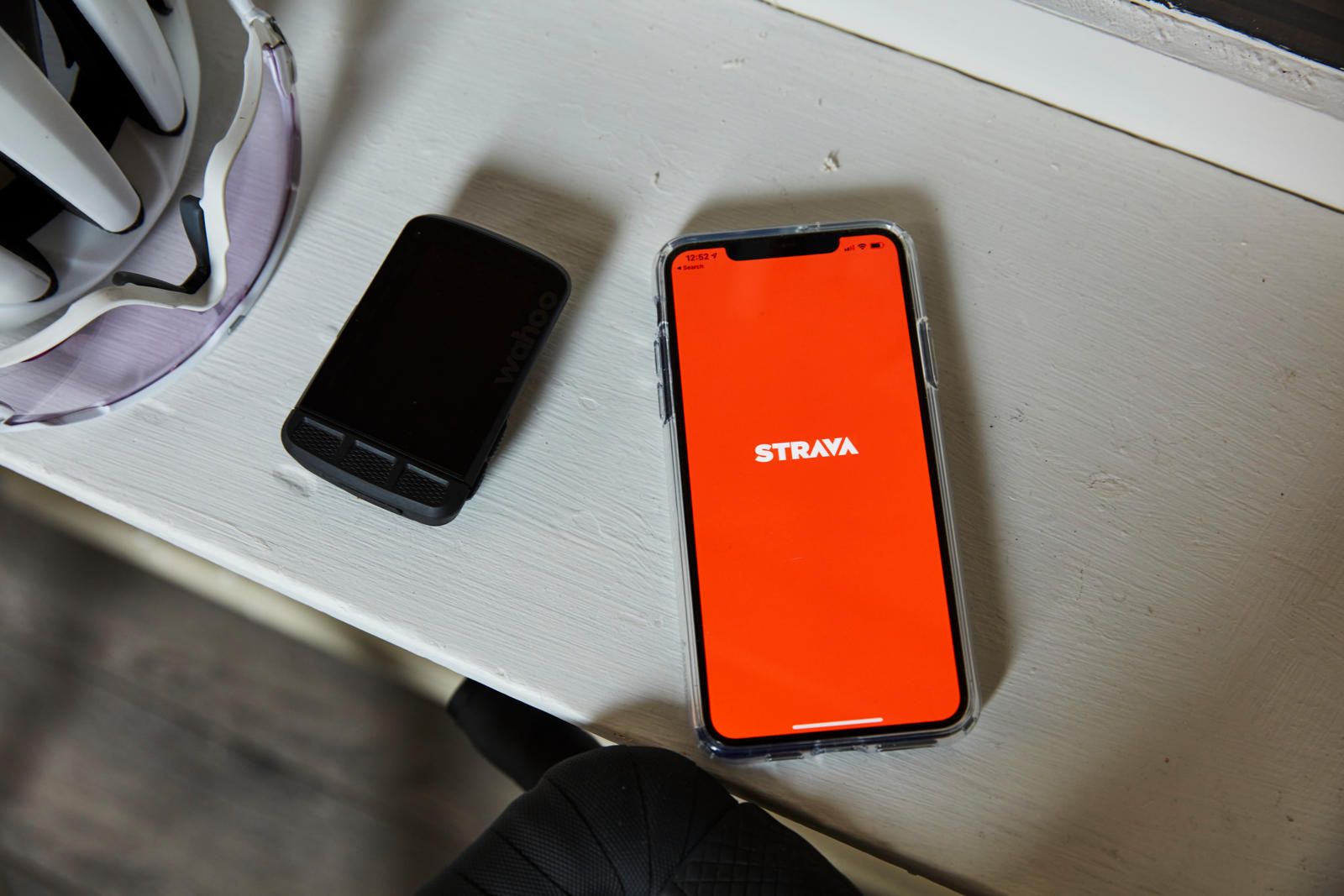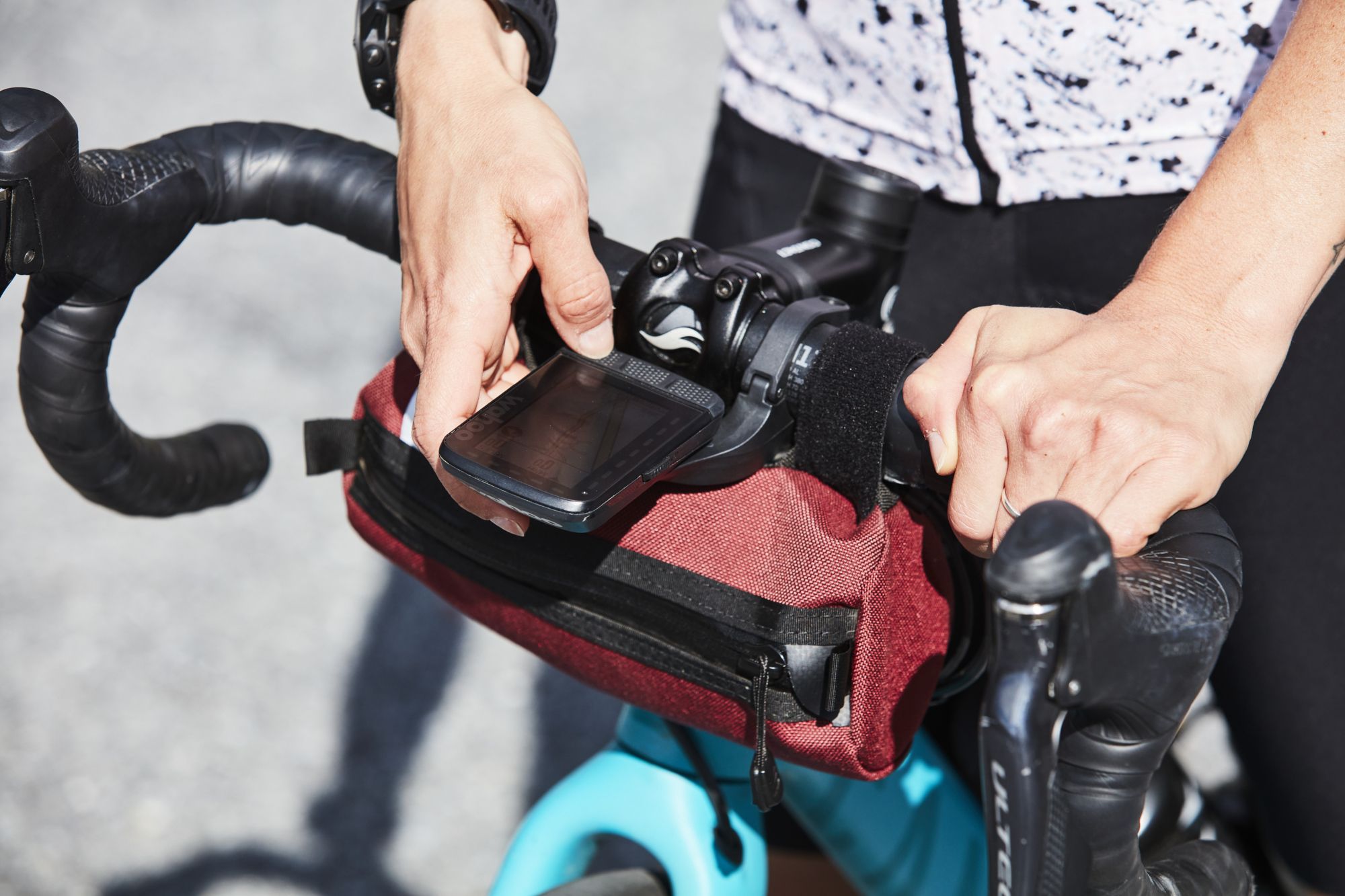This Strava Feature Helped Me Crush My Most Elusive PR
Using Strava to track his favourite PR segments has made Neal Rogers faster than he's been in a decade - including when he had a coach!
I wasn’t thinking about setting a new PR when I rode my favorite local climb last September.
I also wasn’t opposed to the idea.
I’m an avid Strava user and often chase a PR when I’m feeling fit and the conditions are just right. And that’s the thing: The night before that ride, I’d been on my feet for hours watching the Lumineers debut a new album live, tipping back a few beers and staying out way too late.
I went out to ride Boulder’s Lee Hill Drive that day because the weather was nice and I had an opening in my schedule—not because I intended to lay down any markers.
 It’s a climb I know well. It’s steepest at the bottom, and I usually try to hit that section with a few extra watts, just to get it over with. I could tell right away that I was feeling good. Five minutes in, I was hovering at my best-ever 20-minute power output with no desire to back off the pace. My head unit, running Strava’s Live Segment feature, let me know that I was also on record pace for the climb—better than a younger and presumably fitter version of myself.
It’s a climb I know well. It’s steepest at the bottom, and I usually try to hit that section with a few extra watts, just to get it over with. I could tell right away that I was feeling good. Five minutes in, I was hovering at my best-ever 20-minute power output with no desire to back off the pace. My head unit, running Strava’s Live Segment feature, let me know that I was also on record pace for the climb—better than a younger and presumably fitter version of myself.
Following the Live Segment updates and pacing over the five-kilometre, 350m climb, I finished 25 seconds faster than my PR from April 2013. As an endurance athlete nearing my 50th birthday, it’s hard to put into words how good it felt to beat the 40-year-old me. I wouldn’t quite call it pushing back the clock, but it did feel like validation that I’d learned to train smarter, more efficiently, and with a new purpose. In fact, last year I had better 20-minute power and topped more PRs than at any point during 10 years of recording data on Strava—including when I worked with a coach in 2014. Strava’s Live Segments was the biggest driver in improving how I worked out and stayed motivated, but the training tool can be used for a lot more than chasing old PRs.
 American pro Neilson Powless of EF Education–EasyPost used Live Segments last season during a break between the Tour de France and his breakthrough victory at the one-day Clásica San Sebastián. While training in Greece, he discovered a hilly circuit on Strava and set out to tackle the most interesting segments while Live Segments paced him against the record times.
American pro Neilson Powless of EF Education–EasyPost used Live Segments last season during a break between the Tour de France and his breakthrough victory at the one-day Clásica San Sebastián. While training in Greece, he discovered a hilly circuit on Strava and set out to tackle the most interesting segments while Live Segments paced him against the record times.
“If you’re a competitive person, Live Segments gives you a target,” Powless says. “It makes you feel like you’re in a competitive situation even if you’re by yourself. You’re not really alone; there’s a competitor chasing you or that you’re chasing. It ups the ante.”
How Live Segments Works
I started using Live Segments after the pandemic first hit and all my rides became solo rides. I could no longer rely on fast friends to force the pace; pushing beyond my comfort zone was entirely up to me. With a little help from my head unit—a Wahoo Roam—chasing my best self proved to be a very motivating tool to get out the door and go hard. And in some ways, it was a throwback to an earlier era. Well before GPS computers and power meters, riders recorded times from stopwatches into notebooks to track their performance. Now those records are on your handlebar, in real time.
Feedback provided by Strava’s Live Segments (a subscription-only feature) is like having your own support car urging you on—with more substantial information than a DS screaming “Allez!” in your ear. Via a smartphone or GPS head unit, Strava subscribers can track their current effort compared to either their PR, the KOM or QOM, or a Strava friend’s best time. Non-subscribers can also track their progress on a chosen segment in real time, but without the all-important comparison metrics—not ideal.
 When you approach a segment you’ve selected in advance—by tapping on the star icon next to its name within the Strava app or website—you’re notified that you’re about to start competing against your own best time. As you cross the segment’s virtual start line, the race is on. You’re provided with time elapsed, projected time ahead or behind PR pace, distance remaining, and estimated finishing time. These data fields can be modified; my Live Segments page also provides current heart rate and power data. The bottom of the Live Segments screen on my Wahoo also shows an elevation profile that tracks progress.
When you approach a segment you’ve selected in advance—by tapping on the star icon next to its name within the Strava app or website—you’re notified that you’re about to start competing against your own best time. As you cross the segment’s virtual start line, the race is on. You’re provided with time elapsed, projected time ahead or behind PR pace, distance remaining, and estimated finishing time. These data fields can be modified; my Live Segments page also provides current heart rate and power data. The bottom of the Live Segments screen on my Wahoo also shows an elevation profile that tracks progress.
Neither a heart rate monitor nor a power meter is necessary when pacing with Live Segments, but both are helpful in determining your limits by providing numbers to match that proverbial red line. Not long ago, I broke a six-year-old PR on a 30-minute local climb using just Live Segments and heart rate data.
Live Segments can also apply to several overlapping segments at once. If you don’t seem to be on track for beating your PR on a shorter, more intense effort, you might still have a shot at a longer, more sustained segment that includes the shorter segment. So you can shift your objective while still remaining motivated by setting a new best time on one of the many potential segments on your ride
How to Use Live Segments
Neal Henderson, head of sports science at Wahoo Fitness, uses Live Segments on his own rides and encourages athletes who find it motivating to incorporate it into their workload on a weekly basis. He believes the psychological boost provided by competition with oneself is substantial.
“As a physiologist, the more I study it, the more I see that performance is related to psychology and confidence,” Henderson says. “Often we have the physical capacity to do something, but if we don’t have the confidence, it’s not possible.”
When I set out on Lee Hill Drive, it was Live Segments that gave me the confidence to attack my PR. I didn’t start the climb feeling strong, but the live data provided a window into my performance and encouragement to keep going hard.
“If you believe you can, you can create that performance,” Henderson says.
Former WorldTour pro Phil Gaimon starting using Live Segments after his attempt to break 2013 Vuelta a España champ Chris Horner’s 51-minute KOM on Mount Palomar in San Diego County. He fell short by just eight seconds. “As embarrassing as it is to admit, I will dig deeper when there is a digital crown at stake,” says Gaimon. “If I have the choice between two 20-minute efforts and two 20-minute Strava segments, I’ll find an additional 10 or 15 watts when I’m more motivated [for the segment].”
Powless says that while he uses Live Segments less often in the early months of the season when he’s focused on volume, he finds it more valuable in the latter half when he’s primarily interested in fine-tuning his intensity.
 “When I first start training, I don’t really look at Strava at all. Then as the threshold starts to improve and I start to get pretty close to the fastest times just through the workouts I’ve been doing, that’s when it gets fun,” Powless says.
“When I first start training, I don’t really look at Strava at all. Then as the threshold starts to improve and I start to get pretty close to the fastest times just through the workouts I’ve been doing, that’s when it gets fun,” Powless says.
Gaimon also uses Live Segments to keep himself honest on endurance rides. “On a long day, it’s easy to zone out and drop 20 watts,” he says. “So you put the whole ride in as a segment, and now you have a bit of carrot—your own past effort—for the entire ride, and you find a little more juice to push it.”
Similarly, Gaimon knows of pro riders using Live Segments during races, relying on their bike computers rather than course markings or information from their team cars. “You used to have to study the race book to know that the climb ends at, say, the 67-kilometre point,” he says. “So you can just pace yourself better.”
Live Segments can bring a whole new dynamic to a segment you’ve ridden countless times. The same goes for doing repeat efforts. “It definitely takes away the monotony of doing intervals,” Powless says. “It can be a big motivator.”
“Often we have the physical capacity to do something, but if we don’t have the confidence, it’s not possible.”
Keep in mind that your overall performance will be poorly served if the segments you target are too similar. Consistently racing yourself up 20-minute climbs will improve your 20-minute threshold, but to the detriment of longer or shorter efforts. To avoid becoming overly specialised, Henderson says you shouldn’t attempt a PR on the same segment too often—no more than once a week—so that your performance and motivation don’t grow stale. He also suggests that riders target segments across several durations; namely, one-minute, five-minute, and 20- to 30-minute efforts. The one-minute effort will build anaerobic capacity, the five-minute effort will develop maximum aerobic capacity (VO2 max), and the 20- to 30-minute efforts will fine-tune functional threshold power (FTP). “That’s a good check across your short-term power, your midrange, and your longer, sustained power,” he says.
How to Optimise Your PR Attempts
On days when breaking a Strava PR is the ultimate goal, make your attempt on fresh legs first and foremost—ideally after a rest day or an easy day. There’s no point in giving your all on tired legs.
Likewise, your gear should be dialled: head unit charged, chain clean and lubed, tire pressure just right, and no unnecessary layers. Eat wisely beforehand, with an emphasis on simple carbs to avoid digestion issues, and include a bit of caffeine if you’re so inclined. Bring only the water you need; unnecessary liquid is excess weight.
With all that in mind, use the approach to the segment as your warmup. Get your heart rate up to fully oxygenate your muscles, stop to catch your breath if you need to, and then accelerate up to the segment’s start point so that you enter it at the effort you’ll maintain.
Once on your selected segment, save a little something for an all-out effort over the last 20 percent. There’s only one time to risk blowing up, and that’s at the end. If it’s a climb, Henderson suggests giving it a bit more of a push on the steepest sections, as this is where the biggest time differences are made. Use the faster, flatter sections to recover. Get it right and you might just hit a faster overall time with a lower average power than your previous PR.
 Finally, don’t immediately throw in the towel if Live Segments says you’re off pace. GPS bike computers aren’t infallible, especially when switchbacks are involved. Sometimes a projected finish time can be way off, and the computer doesn’t self-correct until the segment is nearly over. I’ve had my heart broken a few times after I assumed halfway through a segment that there was no way I could beat my PR, only to realise at the finish that I’d been tracking much closer than I thought. If you’re really going for it, fully commit.
Finally, don’t immediately throw in the towel if Live Segments says you’re off pace. GPS bike computers aren’t infallible, especially when switchbacks are involved. Sometimes a projected finish time can be way off, and the computer doesn’t self-correct until the segment is nearly over. I’ve had my heart broken a few times after I assumed halfway through a segment that there was no way I could beat my PR, only to realise at the finish that I’d been tracking much closer than I thought. If you’re really going for it, fully commit.
If you miss your mark, you may find it helpful after a ride to use Strava’s Effort Comparison feature to study your pacing. It’s a handy tool that helps you to see where you gained or lost time compared to your best effort.
While I’ve returned to riding in groups, I find that I set new PRs almost exclusively when I’m riding alone, with Live Segments helping dictate the pace. If a group is too fast, there’s a good chance I’ll blow up; if it’s too slow, we won’t be setting any records. And that’s fine. Not every ride needs to be a record-setting attempt. But if you want to ride faster than you ever have, Strava Live Segments might be the perfect motivational tool.
READ MORE ON: cycling apps cycling tech pb personal bests strava tracking training

